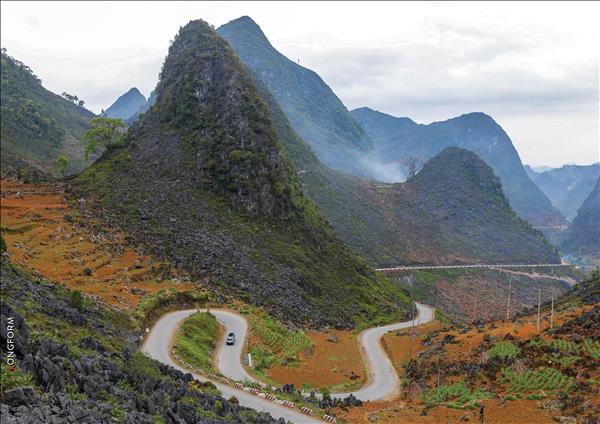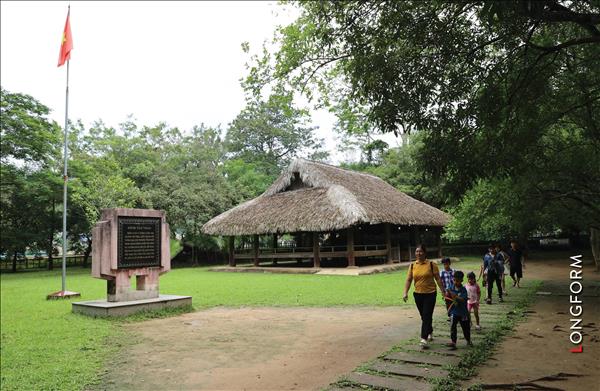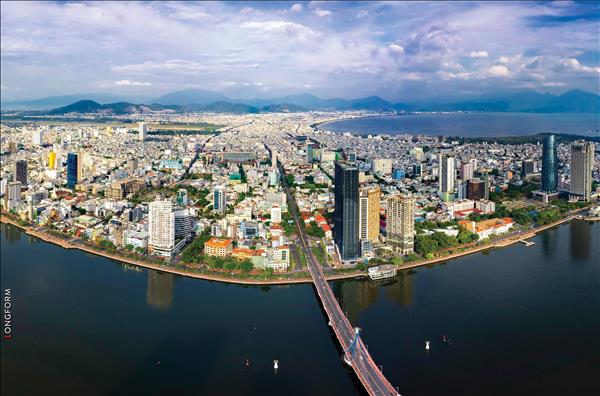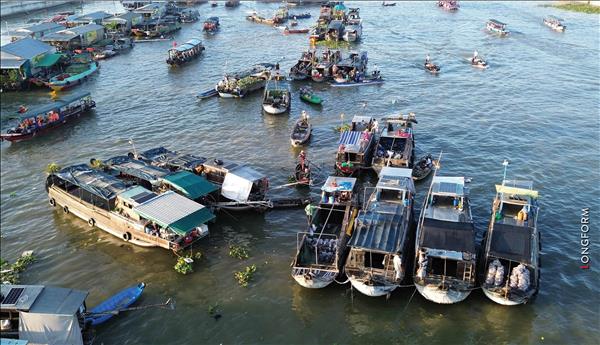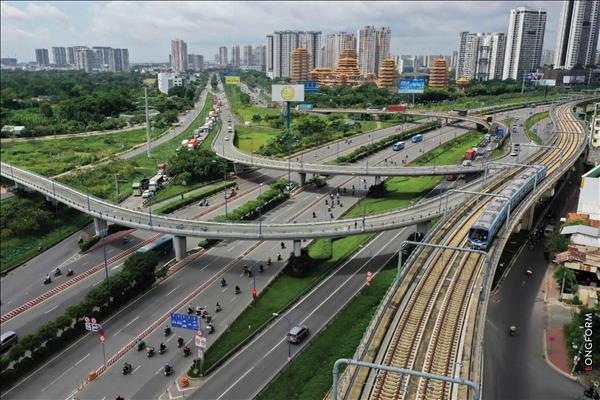A long march for waste land reclamation
According to historical documents, the name Dong Thap Muoi appeared in the early 19th century. This region lies in the Tien River basin. It is a pan-like valley with alkaline soil where only sedge could grow in vast fields. The region was confronted annually with six months of flooding which made it a bowl of floods and six months of drought making it so dry that no vegetation could grow. Even when the French colonialists invaded the South, they sent specialists to research Dong Thap Muoi in an attempt to tap it for their own interests. They returned in vain, saying that Dong Thap Muoi could not be planted with rice.
The alum soil heavily affected the quality of agricultural land and daily-life activities of migrants who came to reclaim this virgin area. Untold difficulties were still fresh in the mind of Nguyen Thanh Tai (Tan Tay Commune, Thanh Hoa District, Long An Province), who had come to Dong Thap Muoi to make a living. He said, “ By then, this area was deserted and very thinly populated with only one house seen after travelling for one kilometre. Water sources were heavily affected with alum which could be clearly seen from its surface to its bottom. New settlers had to filter such water through kitchen ashes wrapped in long scarfs for use in their daily activities”.
In the face of an urgent demand to remedy the food shortage after national reunification, provinces in this region organised migrations to Dong Thap Muoi for concentrated large-scale reclamation of waste land for rice cultivation. Thousands of people from such localities as Ben Tre, Tien Giang, Ca Mau, and Long An went to Dong Thap Muoi, to establish rice-growing farms. After six years (1976-1982), 27 state-run farms were set up in the entire Dong Thap Muoi region, having formed three rice-growing areas, namely Vinh Hung, Dong Thap and Moc Hoa, with a total area of 222,369 ha. However, the production did not bring about high efficiency due to the cultivation of only one rice crop in the rainy season.
Speaking of the great contributions to the reclamation, conquering and transformation of this land, Dong Thap Muoi inhabitants could not help mentioning the late Prime Minister Vo Van Kiet, who, during the late 80s in his then capacity as Vice-Chairman of the Council of Ministers, met with leading officials of Long An, Tien Giang and Dong Thap provinces to discuss measures to transform this region. From then on, he resolved to direct the successful implementation of the program of “living together with floods” and “draining floods to the western sea”, which helped drain floods, and salt water, carry fresh water, wash away alum, reclaiming and transforming hundreds of thousand hectares of waste land.
Also from then on, many researchers and scientists volunteered to go to Dong Thap Muoi region for field studies, of which the important researches conducted by Associate Prof., Dr. Ho Van Chin and his team from the Geography- Resources Institute of Ho Chi Minh City became a guideline for Dong Thap Muoi in practical application.
Through his studies, Associate Prof., Dr. Ho Van Chin concluded that the most difficult thing in the reclamation of Dong Thap Muoi was how to make local inhabitants clearly understand which plants should be cultivated on which type of soil and the extremely important role of irrigation in agricultural production.
Through practical application, such canals as Hong Ngu, Vinh Hung and grade-1 canals of 28, 79, 12.. were expeditiously built to carry fresh water from Tien and Vam Co rivers into Dong Thap Muoi fields, which has helped not only wash away alum but also drain floods to the eastern sea, easing the pressure of rainy floods while supplying fresh water for cultivation and the daily activities of people. With fresh water, rice-growing acreage has constantly expanded while areas left unused have been narrowed.
In 1983, the Dong Thap Muoi Agricultural Research and Development Centre was established in Vinh Hung District, Long An Province, with the tasks of researching practical solutions to successful rice cultivation on alum soil.
During this time, such measures as deep rice sowing, use of heated phosphorous fertilizer to control alum for rice growing, which were worked out by the research centre, were applied while new national rice strains of QR50404 and IR59606, which were resistant to alum and plant diseases, of high yields and stable in both crops, satisfied the rice-producing demands.
MSc. Nguyen Viet Cuong, Director of Dong Thap Muoi Agricultural Research and Development Centre, said that irrigation systems, alum-resistant rice varieties, rice growing techniques, fertilizers and effective alum control had constituted important breakthroughs in changing Dong Thap Muoi.
Big granary of the Mekong River Delta
Following the liberation, Dong Thap Muoi could grow only one rice crop a year with a modest output of some 700,000 – 800,000tons/year. Yet, so far, the rice-growing acreage has increased by 350,000 ha with 2 to 3 rice crops a year and a rice output of about 3.5 million tons/ year (2014’s figure). Annually, Dong Thap Muoi granary contributes about 20% of Vietnam’s total rice export volume.
Recently in early September, we went to Dong Thap Muoi at a time when the summer- autumn rice crop was being harvested. Along the roads running through Dong Thap Muoi, yellow rice fields stretched far to the horizon. Big asphalt roads run to border districts and communes, which are followed by electricity and water supply networks. Solid houses have been built in flood areas, helping local people feel at ease in their daily activities and production.
Kien Tuong, a provincial town of Long An Province, was upgraded in 2013, being a new rural face in border region, demonstrating the fast development of Dong Thap Muoi over the past 40 years.
For more than 40 years of rice cultivation in Dong Thap Muoi region, Vo Thi Hong (Tuyen Thanh Commune, Kien Tuong Town, Long An Province), has turned 30ha of flood land into green rice fields. From only one crop/ year with a yield of about 1-2tons/ha, now Hong as well as other peasants can grow three crops a year, with an average yield of about 7- 8tons/ ha or even 10 -11tons/ha in some years.
Apart from rice, proper plants are being grown in different areas of Dong Thap Muoi. In alkaline land with poor soil such as the districts of Thanh Hoa, Tan Thanh, Moc Hoa, Tan Hung and Vinh Hung of Long An Province, water melon is cultivated at years end, in addition to two rice crops; purple yam is grown widely on heavily aluminous soil in Tan Phuoc District (Tien Giang); pineapple, lemon and dragon fruit are grown widely in Thanh Hoa (Long An); sesame and water melon are widely cultivated in Vinh Hung and Tan Hung (Long An). A number of submerged areas are covered with cajeput, water-lily and lotus.
According to Tran Van Hoang, Director of the Agriculture and Rural Development Department of Long An Province, the current plant structure in Dong Thap Muoi aims to increase output and diversify vegetation towards multi-crop production as a sustainable development direction for Dong Thap Muoi. However, rice remains the leading, key and sustainable plant of this region.
Despite certain difficulties. Dong Thap Muoi, with correct direction suitable to local reality, is opening up opportunities for sustainable socio-economic development for today and tomorrow.
Story: Son Nghia - Photos: Le Minh, Thong Hai & VNP’s files
According to historical documents, the name Dong Thap Muoi appeared in the early 19th century. This region lies in the Tien River basin. It is a pan-like valley with alkaline soil where only sedge could grow in vast fields. The region was confronted annually with six months of flooding which made it a bowl of floods and six months of drought making it so dry that no vegetation could grow. Even when the French colonialists invaded the South, they sent specialists to research Dong Thap Muoi in an attempt to tap it for their own interests. They returned in vain, saying that Dong Thap Muoi could not be planted with rice.
The alum soil heavily affected the quality of agricultural land and daily-life activities of migrants who came to reclaim this virgin area. Untold difficulties were still fresh in the mind of Nguyen Thanh Tai (Tan Tay Commune, Thanh Hoa District, Long An Province), who had come to Dong Thap Muoi to make a living. He said, “ By then, this area was deserted and very thinly populated with only one house seen after travelling for one kilometre. Water sources were heavily affected with alum which could be clearly seen from its surface to its bottom. New settlers had to filter such water through kitchen ashes wrapped in long scarfs for use in their daily activities”.
In the face of an urgent demand to remedy the food shortage after national reunification, provinces in this region organised migrations to Dong Thap Muoi for concentrated large-scale reclamation of waste land for rice cultivation. Thousands of people from such localities as Ben Tre, Tien Giang, Ca Mau, and Long An went to Dong Thap Muoi, to establish rice-growing farms. After six years (1976-1982), 27 state-run farms were set up in the entire Dong Thap Muoi region, having formed three rice-growing areas, namely Vinh Hung, Dong Thap and Moc Hoa, with a total area of 222,369 ha. However, the production did not bring about high efficiency due to the cultivation of only one rice crop in the rainy season.
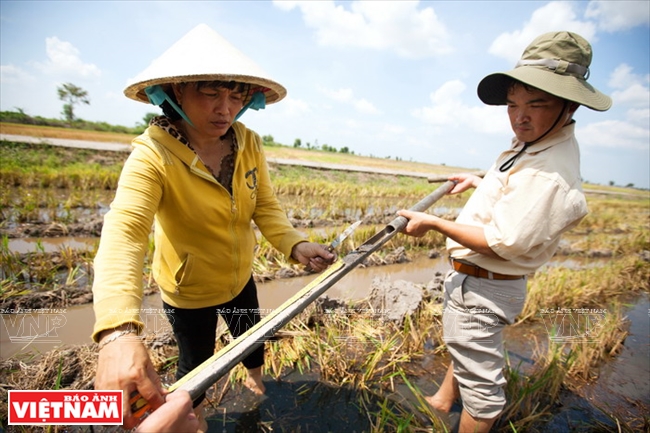 Cadres of the Dong Thap Muoi Agricultural Research and Development Centre conduct research on alum soil in the field. Photo: Le Minh/VNP  Scientists conduct geological research in Dong Thap Muoi. Photo: File 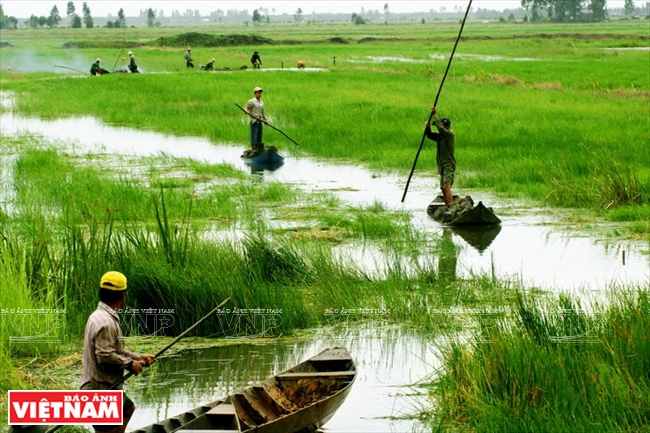 The reclamation in Dong Thap Muoi is considered a exploit of the southern people. Photo: VNP’s file 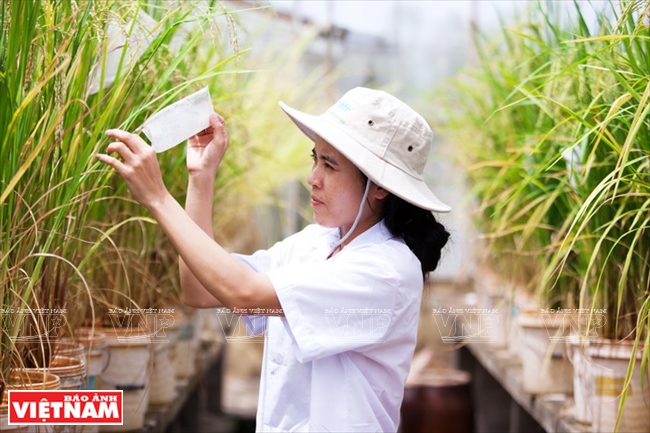 A cadre of the Dong Thap Muoi Agricultural Research and Development Centre checks alum-resistant rice varieties planted in the net house of the centre. Photo: Le Minh/VNP 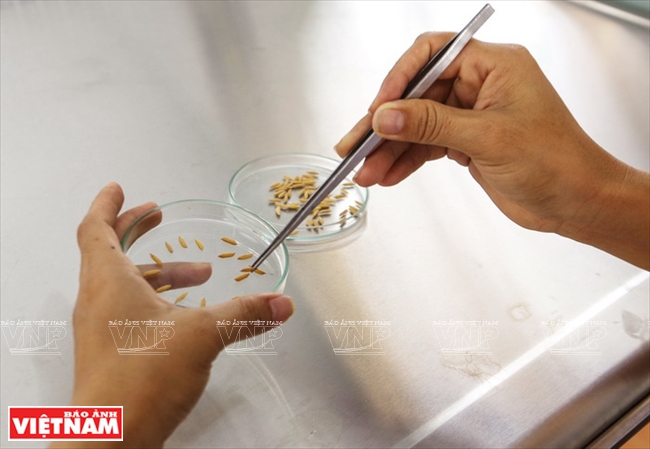 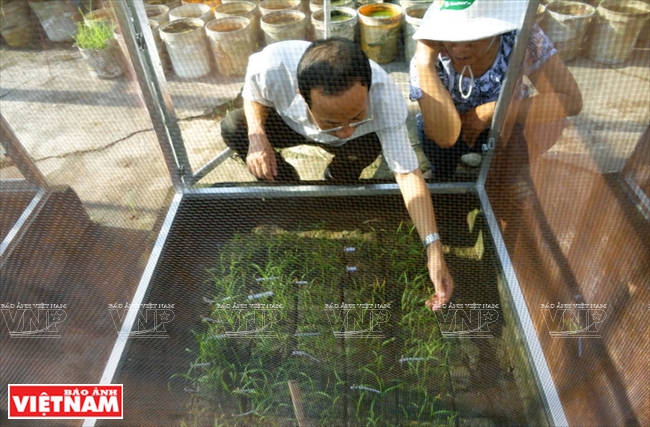 Researching rice varieties which are suitable to the soil in Dong Thap Muoi at the Dong Thap Muoi Agricultural Research and Development Centre. Photo: Thong Hai/VNP & file 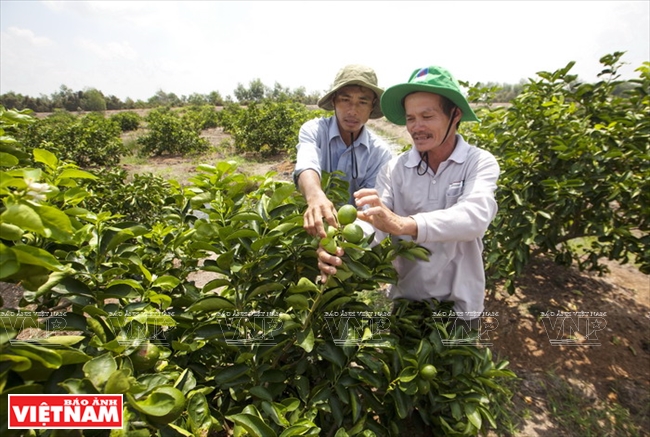 The area for growing a variety of seedless lemons in alum soil in Tan Tay Commune, Thanh Hoa District, Long An Province. Photo: Thong Hai/VNP 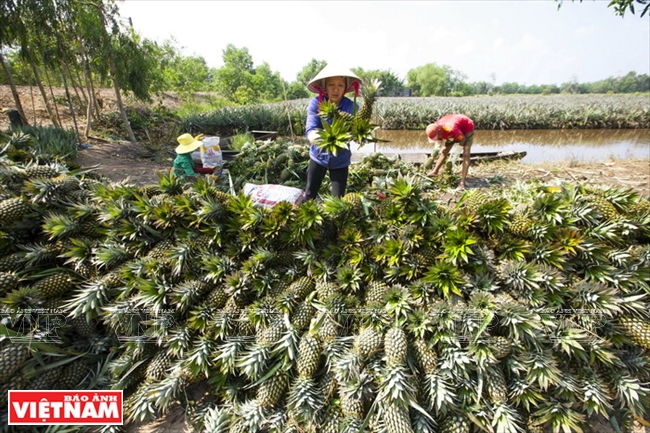 Pineapple is suitable for growing in alum soil in Dong Thap Muoi. Photo: Thong Hai/VNP 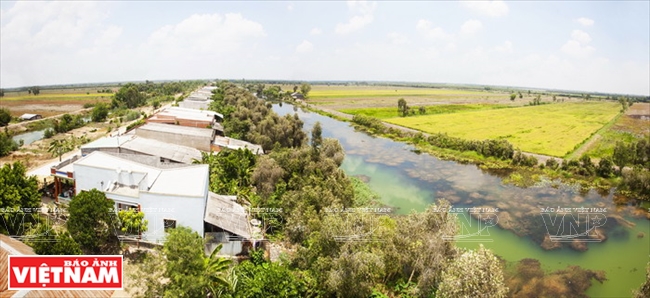 Residential areas near canals in Thanh Hoa District, Long An Province. Photo: Le Minh/VNP 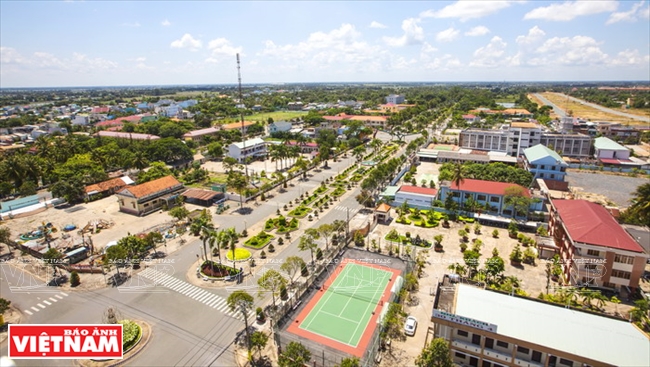 Panoramic view of Kien Tuong Town in Long An Province. Photo: Thong Hai/VNP |
| Dong Thap Muoi is the name of a low-lying region of 697,000 ha, representing nearly 18% of the Mekong River Delta area, stretching over three provinces: Long An, Tien Giang and Dong Thap, of which Long An occupies some 50% of the land area. |
Also from then on, many researchers and scientists volunteered to go to Dong Thap Muoi region for field studies, of which the important researches conducted by Associate Prof., Dr. Ho Van Chin and his team from the Geography- Resources Institute of Ho Chi Minh City became a guideline for Dong Thap Muoi in practical application.
Through his studies, Associate Prof., Dr. Ho Van Chin concluded that the most difficult thing in the reclamation of Dong Thap Muoi was how to make local inhabitants clearly understand which plants should be cultivated on which type of soil and the extremely important role of irrigation in agricultural production.
Through practical application, such canals as Hong Ngu, Vinh Hung and grade-1 canals of 28, 79, 12.. were expeditiously built to carry fresh water from Tien and Vam Co rivers into Dong Thap Muoi fields, which has helped not only wash away alum but also drain floods to the eastern sea, easing the pressure of rainy floods while supplying fresh water for cultivation and the daily activities of people. With fresh water, rice-growing acreage has constantly expanded while areas left unused have been narrowed.
In 1983, the Dong Thap Muoi Agricultural Research and Development Centre was established in Vinh Hung District, Long An Province, with the tasks of researching practical solutions to successful rice cultivation on alum soil.
During this time, such measures as deep rice sowing, use of heated phosphorous fertilizer to control alum for rice growing, which were worked out by the research centre, were applied while new national rice strains of QR50404 and IR59606, which were resistant to alum and plant diseases, of high yields and stable in both crops, satisfied the rice-producing demands.
MSc. Nguyen Viet Cuong, Director of Dong Thap Muoi Agricultural Research and Development Centre, said that irrigation systems, alum-resistant rice varieties, rice growing techniques, fertilizers and effective alum control had constituted important breakthroughs in changing Dong Thap Muoi.
Big granary of the Mekong River Delta
| “The agricultural production value of Long An province’s Dong Thap Muoi area represents over 85% of the province’s total production value, of which rice cultivation accounts for nearly 80%. The current rice output of Long An Province approximates 2.85 million tons/ year with a rice-growing area of nearly 150,000ha; purple yam is grown on over 3,000ha, with an average yield of 8.5tons/ ha and an output of over 27,000tons; water melon is planted on over 2,000ha with a yield of over 20tons/ha and an output of over 42,000tons; sesame is cultivated on over 1,500ha, with a yield of 660kg/ ha and an output of nearly 1,000tons”. |
Following the liberation, Dong Thap Muoi could grow only one rice crop a year with a modest output of some 700,000 – 800,000tons/year. Yet, so far, the rice-growing acreage has increased by 350,000 ha with 2 to 3 rice crops a year and a rice output of about 3.5 million tons/ year (2014’s figure). Annually, Dong Thap Muoi granary contributes about 20% of Vietnam’s total rice export volume.
Recently in early September, we went to Dong Thap Muoi at a time when the summer- autumn rice crop was being harvested. Along the roads running through Dong Thap Muoi, yellow rice fields stretched far to the horizon. Big asphalt roads run to border districts and communes, which are followed by electricity and water supply networks. Solid houses have been built in flood areas, helping local people feel at ease in their daily activities and production.
Kien Tuong, a provincial town of Long An Province, was upgraded in 2013, being a new rural face in border region, demonstrating the fast development of Dong Thap Muoi over the past 40 years.
For more than 40 years of rice cultivation in Dong Thap Muoi region, Vo Thi Hong (Tuyen Thanh Commune, Kien Tuong Town, Long An Province), has turned 30ha of flood land into green rice fields. From only one crop/ year with a yield of about 1-2tons/ha, now Hong as well as other peasants can grow three crops a year, with an average yield of about 7- 8tons/ ha or even 10 -11tons/ha in some years.
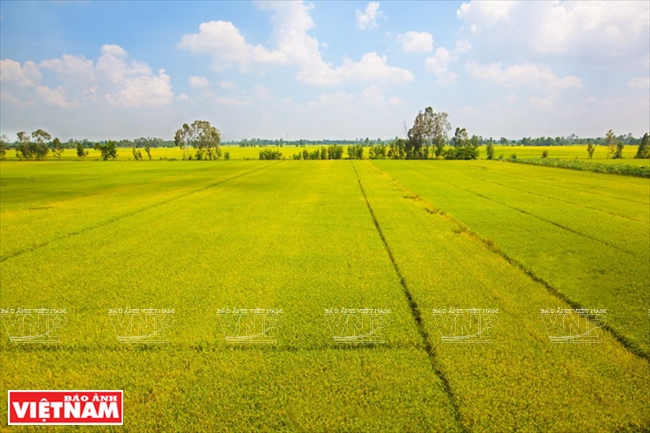 Immense rice fields in Dong Thap Muoi are ready for harvesting. Photo: Thong Hai/VNP 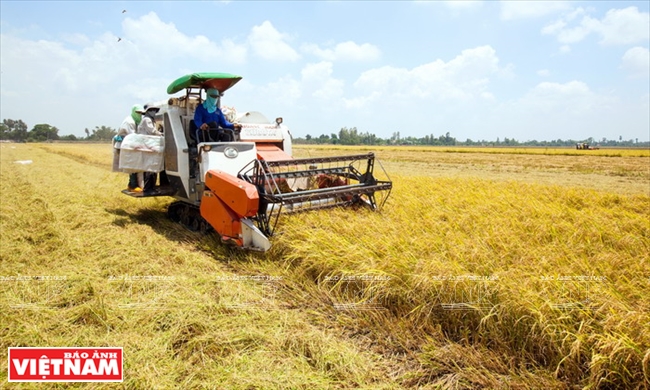 Modern agricultural machines are used in agriculture production that help increase productivity and reduce expenditures in Dong Thap Muoi. Photo: Le Minh/VNP 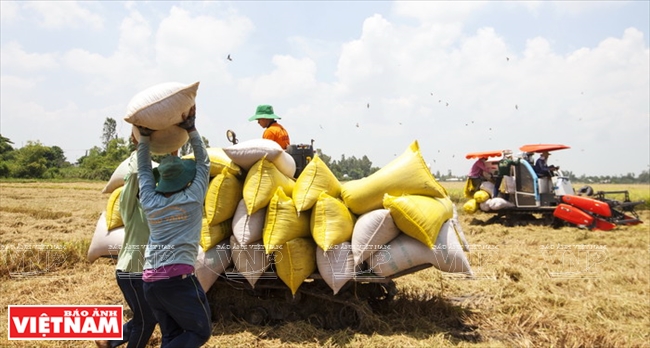 Combine harvesters are used in the fields in Dong Thap Muoi. Photo: Thong Hai/VNP 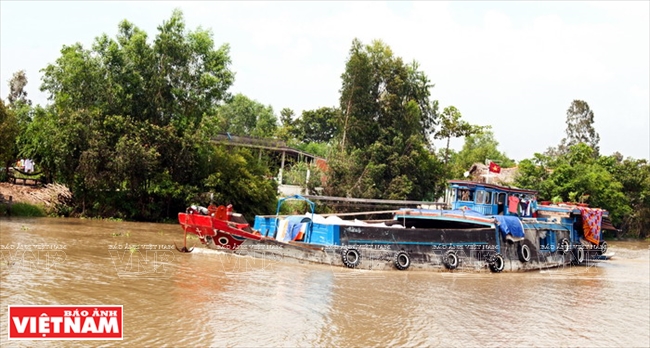 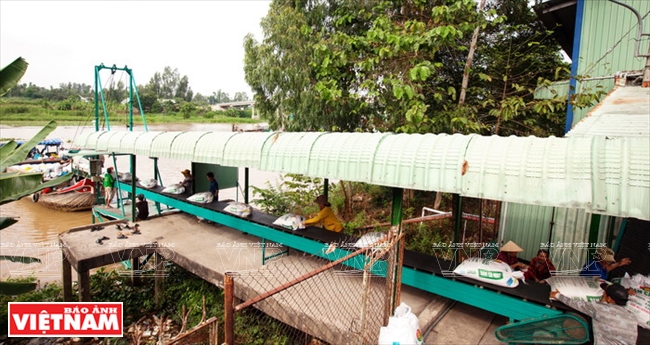 Transporting rice on canals to processing factories in Dong Thap Muoi. Photo: Le Minh/VNP |
| With a rice output of about 3.5 million tons/ year (2014’s figure). Annually, Dong Thap Muoi granary contributes about 20% of Vietnam’s total rice export volume. |
According to Tran Van Hoang, Director of the Agriculture and Rural Development Department of Long An Province, the current plant structure in Dong Thap Muoi aims to increase output and diversify vegetation towards multi-crop production as a sustainable development direction for Dong Thap Muoi. However, rice remains the leading, key and sustainable plant of this region.
Despite certain difficulties. Dong Thap Muoi, with correct direction suitable to local reality, is opening up opportunities for sustainable socio-economic development for today and tomorrow.
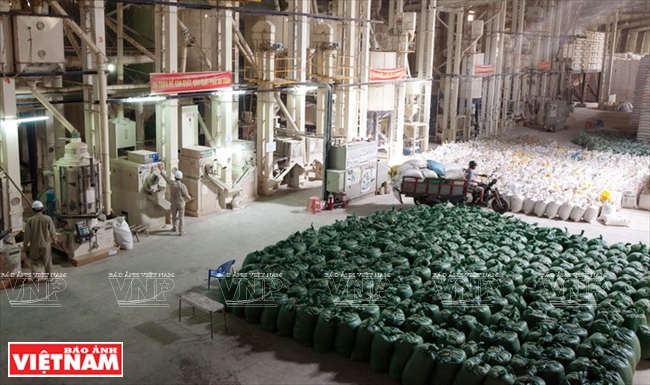 The rice processing line at the Vietnam Southern Food Corporation (VINAFOOD2). Photo: Le Minh/VNP 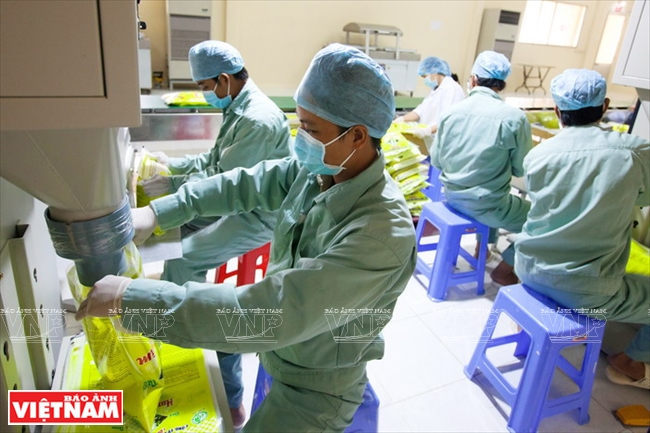 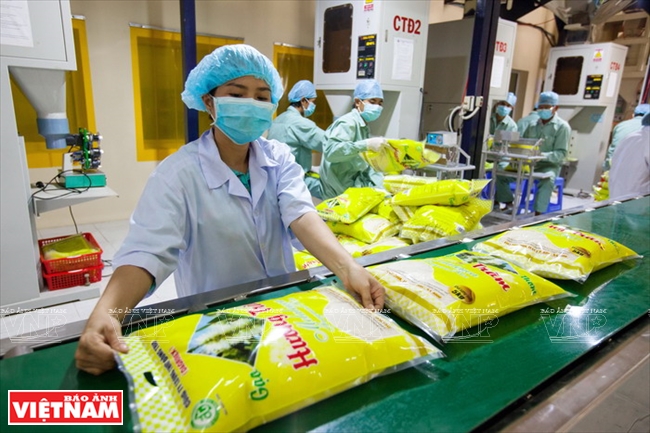 Packing safe rice under the Japanese technology at VINAFOOD2. Photo: Le Minh/VNP 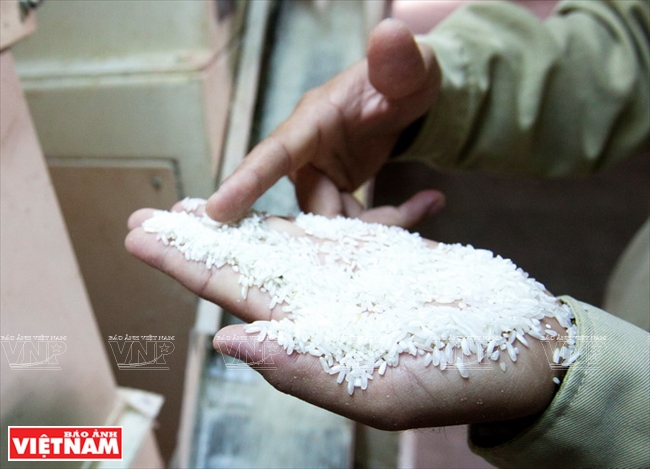 Checking the quality of rice at VINAFOOD2. Photo: Le Minh/VNP |
Story: Son Nghia - Photos: Le Minh, Thong Hai & VNP’s files
phamtrangnhung

